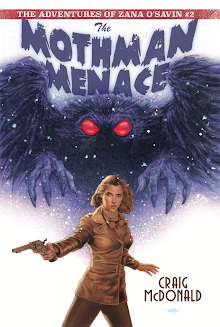 |
| The final version of the Betimes Books' edition of FOREVER'S JUST PRETEND |
Having established the look of the new series with our reissues of ONE TRUE SENTENCE and TOROS & TORSOS, we were next faced with giving first-time packaging to two, never-before-seen Hector Lassiter novels.
The first, the only direct sequel in the Hector Lassiter canon, was FOREVER'S JUST PRETEND. Set in 1925 Key West, the novel comes literally off the end of its predecessor, the 1924, Paris-set ONE TRUE SENTENCE.
FOREVER reunites Hector with his OTS true love, Brinke Devlin. The novel finds Brinke, the muse, completing her essential "creation" of the Hector Lassiter we come to know across the series. Hector is launching himself as a novelist and Brinke is reinventing her writing career with a new, male byline down there on Bone Key.
 |
| Louise Brooks, down South. |
We settled on a very simple and stark arrangement of images telegraphing Hector, Brinke at her writing table and Key West itself, as suggested by some prominent, evocative palm fronds in the background.
 |
| First pass on FOREVER, continuing the sepia treatment used for ONE TRUE SENTENCE. |
Lassiter #4, THE GREAT PRETENDER, is a natural follow up to TOROS & TORSOS, which featured a stretch of the novel centering on Orson Welles during the nightmarish production of his first film noir, THE LADY FROM SHANGHAI.
In PRETENDER, Hector and Orson are partnered across the expanse of the entire novel, and a large portion of the roller coaster arc of their decades-long association is revealed.
 |
| The Prater Wheel, Vienna. |
Because the novel visits the Vienna filming site of the Graham Greene-penned THE THIRD MAN, we toyed with incorporating some image of the Prater Wheel which features so famously in THE THIRD MAN'S iconic confrontation between Joseph Cotten and Welles' Harry Lime.
 The fear was that not enough readers would identify the amusement attraction as anything more than a simple Ferris Wheel (also, just such a wheel and a spread of tarot cards already adorns the cover of my Chris Lyon novel, CARNIVAL NOIR).
The fear was that not enough readers would identify the amusement attraction as anything more than a simple Ferris Wheel (also, just such a wheel and a spread of tarot cards already adorns the cover of my Chris Lyon novel, CARNIVAL NOIR). We next flirted with incorporating an image to suggest Hector's female foil in the novel, a mysterious voodoo priestess with her own shadowy agenda.
We next flirted with incorporating an image to suggest Hector's female foil in the novel, a mysterious voodoo priestess with her own shadowy agenda.One iteration actually didn't incorporate Hector at all, which seemed a serious misstep, to me.
To tie the series together, visually, it seemed essential to keep Mr. Lassiter, front and center, so to speak.
We then tried to pull three faces into the bigger picture.
Again, the concept just didn't seem quite right—it didn't give any real flavor of the book waiting beneath the cover. In the end, we hit on the final design seen below, with the iconic image of Baron Samedi—the loa of the dead in the Haitian Vodou pantheon—lurking over Hector and Orson's shoulders.
NEXT UP: ROLL THE CREDITS
——————









































No comments:
Post a Comment